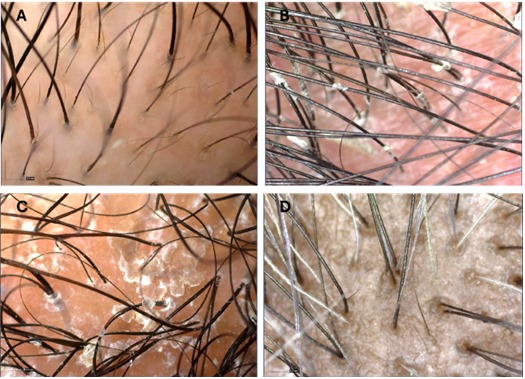Hair loss due to pollution, micro metabolic dysfunction, epigenetics and role of nutrients
DOI:
https://doi.org/10.62742/2965-7911.2024.1.bjhh16Keywords:
Pollution, Hair Loss, Metabolism, Nutrients, Electromagnetic radiationAbstract
Introduction: Hair is unknowingly and unwillingly exposed to pollution through air, water, food, temperature, humidity, UV rays, circadian rhythm, electromagnetic radiation and noise, which alter cellular functions and genetic expression through the generation of reactive oxygen species (ROS). Nutrients can repair cell damage, neutralize the ROS, restore cellular function, counter inflammation, build immunity and correct epi-genetic changes, to achieve hair growth. To understand the metabolic damage inflicted by pollutants and suspended particles through generation of reactive oxygen species (ROS), their epigenetic effects and the role of nutrients to neutralize, repair and restore cellular function, for healthy hair growth.
Methodology: This study includes 63 patients, 37 male and 26 female between 18 to 38 years of age, who matched the criteria for hair loss due to pollution. Every patient received oral supplements of curcumin, quercetin, N-acetyl cysteine, vitamin A, C, D, E, B-complex, biotin, iron, folic acid, epigallocatechin gal-late, amino acids and omega 3 for 4 months. Nutrients were administered in synergistic combinations on different days of the week.
Results: Diffuse hair loss, itching, irritation, redness, sebum, dandruff, grime, burning, trichodynia and dry frizzy, brittle hair were common presentations. Marginally raised heart rate, blood pressure, low hemoglobin, low as well as high serum ferritin, low vitamin D, raised TSH and low T3, T4 were detected. Men and women had an average improvement of 16-21% in density with 18-22% improvement in caliber.
Conclusion: Nutrients can counter the mechanisms of pollution and achieve hair growth without finasteride, anti-androgens or minoxidil.
Downloads

Downloads
Published
Issue
Section
Categories
License
Copyright (c) 2024 Brazilian Journal of Hair Health

This work is licensed under a Creative Commons Attribution 4.0 International License.




